Theater of the absurd: history of establishment.
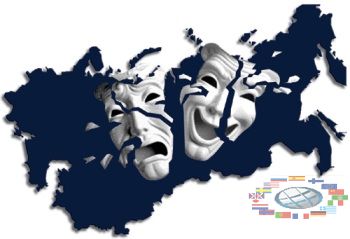
Theater of the absurd has become one of the most significant phenomenas in the history of art of XX century, broken-down the usual understanding of the theater and had a huge impact on the development of drama and directing. 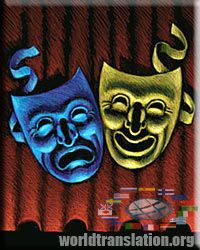 Although the heyday of theater of the absurd remained in the past, its influence is felt to this day, and the works of eminent personalities of this direction have become unconditional classic. The word absurd, comes from the Latin: inappropriate, unworkable, silly.
Although the heyday of theater of the absurd remained in the past, its influence is felt to this day, and the works of eminent personalities of this direction have become unconditional classic. The word absurd, comes from the Latin: inappropriate, unworkable, silly.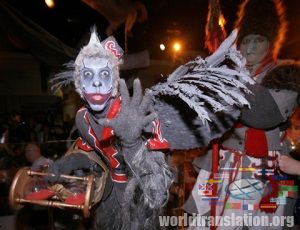 In everyday life, the word absurd is used to describe concepts or actions, which go beyond rational thinking and are meaningless. In its turn strange, comical, absurd and presented in a distorted manner phenomenon is called the the grotesque - the aesthetic concepts, which is closely associated with the theater of the absurd. English critic and literary scholar Eslyn Martin entered into use concept of theater of the absurd, he was the author of the work with the same name. Researcher consider medieval morality play and expressionistic dramaturgy of Johan August Strindberg and prose of Franz Kafka - forerunner of this direction in the dramaturgy.
In everyday life, the word absurd is used to describe concepts or actions, which go beyond rational thinking and are meaningless. In its turn strange, comical, absurd and presented in a distorted manner phenomenon is called the the grotesque - the aesthetic concepts, which is closely associated with the theater of the absurd. English critic and literary scholar Eslyn Martin entered into use concept of theater of the absurd, he was the author of the work with the same name. Researcher consider medieval morality play and expressionistic dramaturgy of Johan August Strindberg and prose of Franz Kafka - forerunner of this direction in the dramaturgy.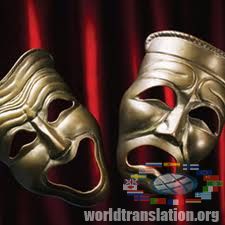 The term caught on, and soon after Eslyn people began to widely use it, to refer the phenomenon, which originated in the late 1940s and lived through its heyday in the 1950s. Among other names of this movement in art we should also mention such quite widespread terms, as: anti- theater and anti-drama and a new theater. A common feature of the works of theater of the absurd is the belief of their authors in futility of human actions caused, as by the meaninglessness of the own destiny of the man, as by the destiny of whole surrounding world; works of prominent thinkers Jean-Paul Sartre and Albert Camus were imbued with this idea, which originates in the philosophy of existentialism.
The term caught on, and soon after Eslyn people began to widely use it, to refer the phenomenon, which originated in the late 1940s and lived through its heyday in the 1950s. Among other names of this movement in art we should also mention such quite widespread terms, as: anti- theater and anti-drama and a new theater. A common feature of the works of theater of the absurd is the belief of their authors in futility of human actions caused, as by the meaninglessness of the own destiny of the man, as by the destiny of whole surrounding world; works of prominent thinkers Jean-Paul Sartre and Albert Camus were imbued with this idea, which originates in the philosophy of existentialism.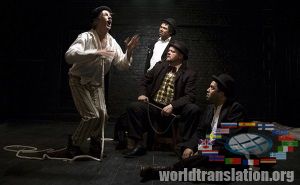 No less, events of World War II became a source of such ideology, that War demonstrated entire depth of moral degradation of mankind, it has exposed the crisis of moral values. In this regard, the german philosopher Theodor Adorno even raised the question: Is it conceivable at all any artistic literature after the horrors of Auschwitz?
No less, events of World War II became a source of such ideology, that War demonstrated entire depth of moral degradation of mankind, it has exposed the crisis of moral values. In this regard, the german philosopher Theodor Adorno even raised the question: Is it conceivable at all any artistic literature after the horrors of Auschwitz? 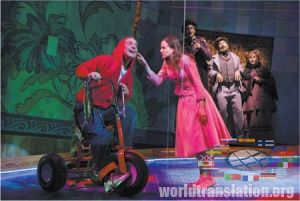 The creators of theater of the absurd tried to show the meaninglessness of human existence, which became particularly evident in the postwar period. At the same time, totalitarian systems and the threat of nuclear war caused serious concern of mankind.
The creators of theater of the absurd tried to show the meaninglessness of human existence, which became particularly evident in the postwar period. At the same time, totalitarian systems and the threat of nuclear war caused serious concern of mankind.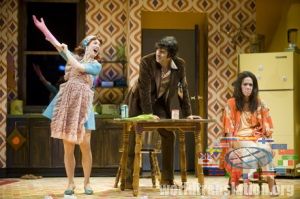 Criticism of modern man, who lives in an unreal, full of lies world, and himself uses disingenuous language, consisting of pompous stamps and slogans - was one more important aspect of works of theater of the absurd. Although the activities of most of the new playwrights were concentrated in Paris - the center of world culture - activists of theater of the absurd did not unite in the group, associated with a single program or manifesto.
Criticism of modern man, who lives in an unreal, full of lies world, and himself uses disingenuous language, consisting of pompous stamps and slogans - was one more important aspect of works of theater of the absurd. Although the activities of most of the new playwrights were concentrated in Paris - the center of world culture - activists of theater of the absurd did not unite in the group, associated with a single program or manifesto. 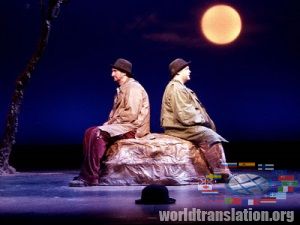 However, a common feature of their performances was a rejection of the old understanding of the dramaturgy; this had such results: metaphorization of depicted world, grotesque, complete illogicality of what is happening on the stage, fragmentation of the plot, indifference to what is happening of the main hero, who usually is deprived of characteristic features and so he is called anti-hero, very stingy - if not to say primitive - scenography, and constant attempts to shock the audience.
However, a common feature of their performances was a rejection of the old understanding of the dramaturgy; this had such results: metaphorization of depicted world, grotesque, complete illogicality of what is happening on the stage, fragmentation of the plot, indifference to what is happening of the main hero, who usually is deprived of characteristic features and so he is called anti-hero, very stingy - if not to say primitive - scenography, and constant attempts to shock the audience.
It's no wonder, that surprise, which spectator had to feel becomes one of the major factor for correct perception of staging of theater of the absurd. Only in their own imagination people, who were in the hall could overcome those formal restrictions which space of the stage, clothes and make-up of heroes imposed on the director and the actors.